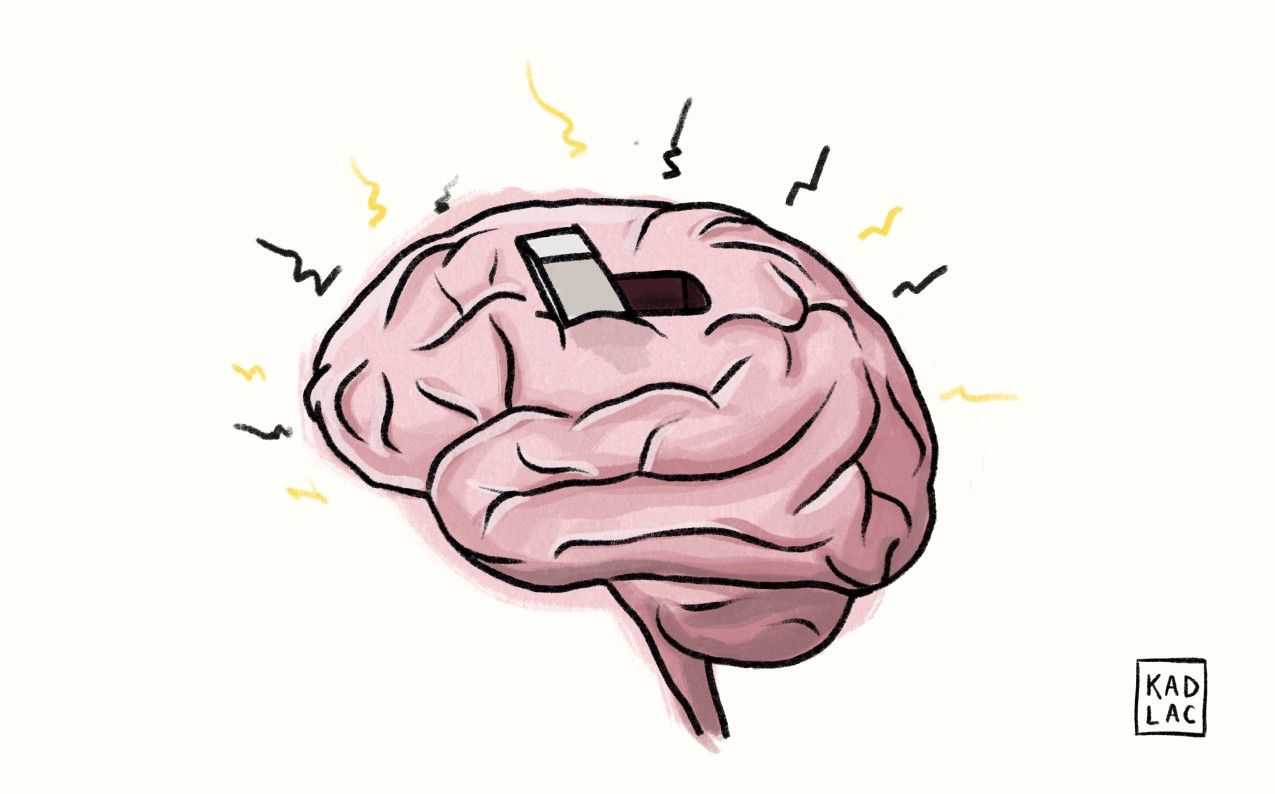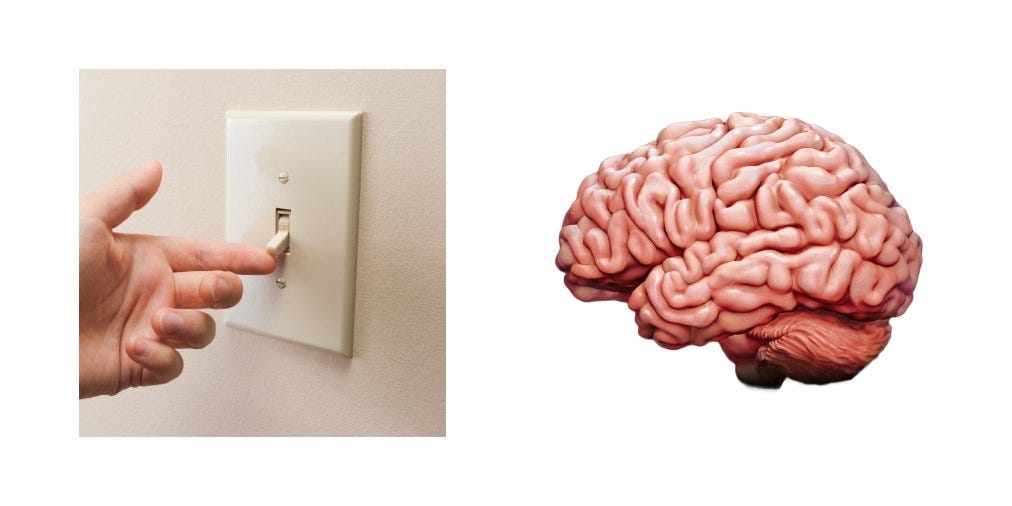How to Flick Your Creativity Switch
3 ways to reframe 'creativity'

“Oh, I can’t [X] — I’m not very creative”.
I’ve said a variation of that sentence probably 100 times throughout my life, and I’ve heard it 10 times as much from other people around me.
Since I started writing and sharing online, I’ve realised how wrong I was.
I can now proudly say:
I’m friggin’ creative!
If you’ve ever uttered those same miserable “I’m not…” words, this might help you reconsider.
1. Nothing is original
Alright, this should immediately take the pressure off.
All creativity is inspired by other people. All ideas are new combinations of old ideas.
The faster you embrace that, the sooner you can start creating your own stuff.
“Something we all understand on a deep intuitive level, but our creative egos sort of don’t really want to accept: creativity is combinatorial, nothing is entirely original, everything builds on what came before, and we create by taking existing pieces of inspiration, knowledge, skill, and insight that we gather over the course of our lives and recombining them into incredible new creations.”
That’s it.
We don’t need to lock ourselves up in a room and come up with entirely new, never seen or heard before ideas.
Great work comes from the combination of other great ideas. It comes from associating thoughts that hadn’t been connected before or delivering them from a different angle, in a different format.
I’ve needed to get over the idea that building on other people’s ideas is cheating. Heck, I even felt guilty about building on my own ideas. Copy-pasting paragraphs from my old articles and reusing them in a new article — is that allowed?! Doesn’t all writing need to happen in the moment, flowing directly from my mind onto the paper?
It turns out it doesn’t.
See that cover image of the brain and the switch? Nate Kadlac created that by overlaying 2 existing images in an illustration software and drawing his own version. 100% original? Nope, Creative? Definitely!

2. You discover your unique style by Imitation
I recently completed an online writing course called Write of Passage, and one of my favourite lessons was about Imitation.
This is burned into my mind:
Imitate, then innovate. The premise is simple but counterintuitive: Imitating others is the fastest way to discover your unique style.
As you’re living your life, pay attention to what stands out. What keeps you engaged, or what do you find beautiful?
Then, imitate that.
Don’t steal without attributing or referencing the source, but imitate what it is you liked about something as closely as you can. That’s your starting point.
Then, listen for resistance in the copying process. That’s your unique style coming through.
You might be inspired by the design of a website but dislike how it’s structured. Copy the design, change up the colours, and restructure how you please.
Or maybe you like the style of writing of a particular person. Copy them for as long as you can. You’ll notice how you start to use different sentence structures, and you know what, maybe you like to use more visuals throughout your posts. Before you know it, you have a style that is now entirely separate from the original.
The point is — there is no need to reinvent the wheel and start from a blank canvas completely. That’s paralyzing.
3. Creativity ≠ art
This might be obvious to you, but it was an aha-moment for me.
Artistic ability includes skills and talent to create works of art: painting, drawing, sculpting, musical composition, etc.
You might have the drawing skills of a 5-year old, but that doesn’t mean you’re not creative. It just means you’re not naturally artistic.
A creative person is someone who uses their imagination to formulate ideas and solve problems. So, pretty much all of us.
- Reading a book and condensing my key takeaways into a 1,500 words blog post is creative.
- Implementing a digital filing method I’ve read about online and making it work for my unique circumstances is creative.
- Setting up my website and newsletter is creative.
- Finding ways to shamelessly link to my other writing in this post is creative.
Even if you’re not sharing anything online:
- Throwing together a meal using all the random ingredients in your kitchen is creative
- Coming up with ideas for your kid’s birthday party to keep 25 kids alive & entertained is creative
You get the gist.
What this means for you & me
At a certain point, I grew tired of calling myself “not creative”. It became nothing more than an excuse not to create anything myself and envy the people who do.
So, what can you start doing right now?
Start sharing your work
If nothing needs to be entirely original, you don’t need to wait with sharing your work.
Share Your Work by Austin Kleon is an inspiring book to read about this.
Become a documentarian of what you do. Start a work journal: Write your thoughts down in a notebook, or speak them into an audio recorder. Keep a scrapbook. Take a lot of photographs of your work at different stages in your process. Shoot video of you working. This isn’t about making art, it’s about simply keeping track of what’s going on around you. Take advantage of all the cheap, easy tools at your disposal — these days, most of us carry a fully functional multimedia studio around in our smartphones.
Or, if sharing your own stuff feels too much too soon, start with curation. That’s what I did and am still doing.
Curation is when you go through the vastness of existing content, choose the best ideas, and add your own twist. Deciding what to include, what to remove, what to highlight and what to expand on — that’s an act of judgement and you’re adding a layer of creative value.
That could be a list of your favourite books or podcasts. My most popular article ever (26k views!) was simply a list of my most used tools and apps.
In a world overloaded with content, curation is as important as supply.
Be ruthless about your content consumption
Garbage in, garbage out.
GIGO is a concept common to computer science and mathematics that states that the quality of output is determined by the quality of the input.
If you want to have interesting ideas, you need to consume interesting content.
That means less news, less social media.
More books, newsletters, blogs, podcasts — be selective and search for the best sources in your area of interest.
Become a noticer
Learn how to see. Realize that everything connects to everything else. ― Leonardo da Vinci
Suck up as much inspiration from around you as you can. A great idea can come from everywhere: a question in a friend’s text message, a quote in a documentary, a line in a book, or an observation on a walk.
This is probably one of my favourite aspects of writing, and I would imagine any creative endeavour. You start seeing the world through the lens of ideas. You start seeing connections where you never used to see them before.
Create a system that allows you to keep track of all your ideas and collect notes, pictures, screenshots, voice notes, observations, etcetera.
